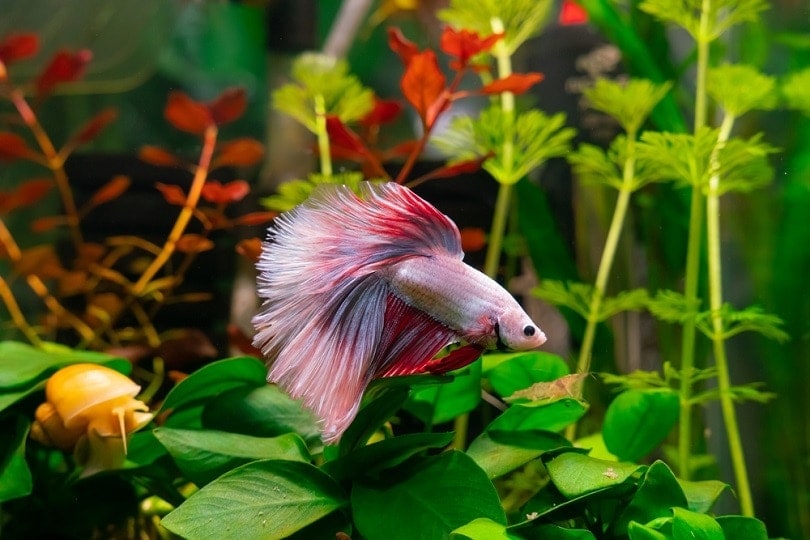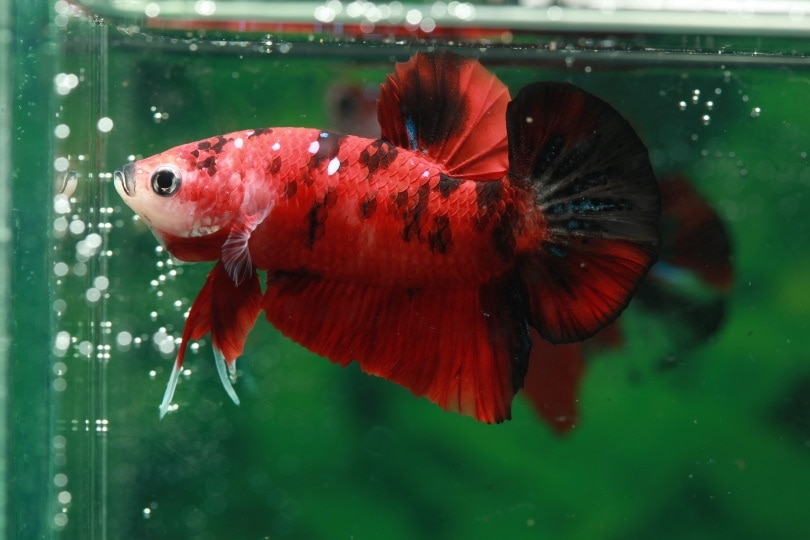Can Harlequin Rasbora & Betta Fish Live Together? Cohabitation Science & Info
Updated on
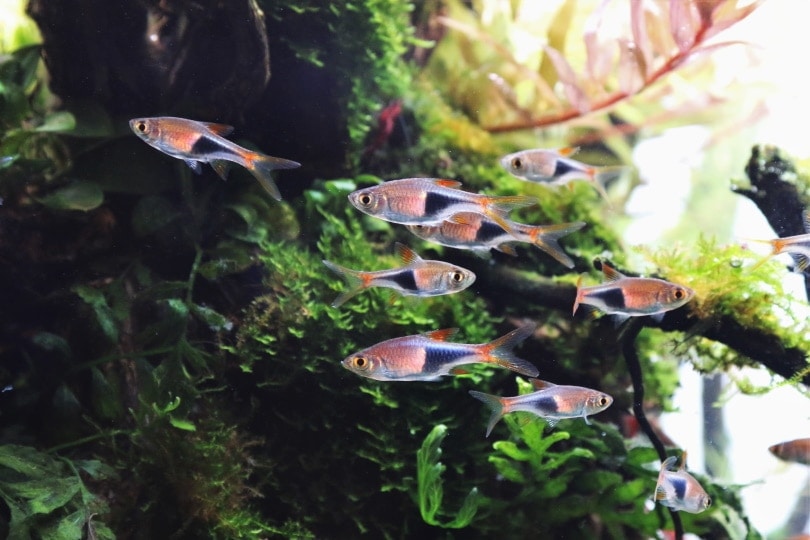
Both the Harlequin rasbora and Betta are beautiful freshwater fish that are quite popular as small, tropical pet fish. You may be delighted to know that both fish species do well when kept together. This makes an attractive pair of tankmates as the Harlequin rasbora, and Betta has stunning colors and finnage. Generally speaking, Harlequin Rasboras are among the best tank mates for Bettas when it comes to compatibility.
This article will help you determine the best way to keep these fish together and if the species are compatible.
Understanding Both Species of Fish
Getting to know the species better and their requirements will help us narrow down if they are good tank mates for each other. By understanding what each fish needs will ultimately help
The Betta
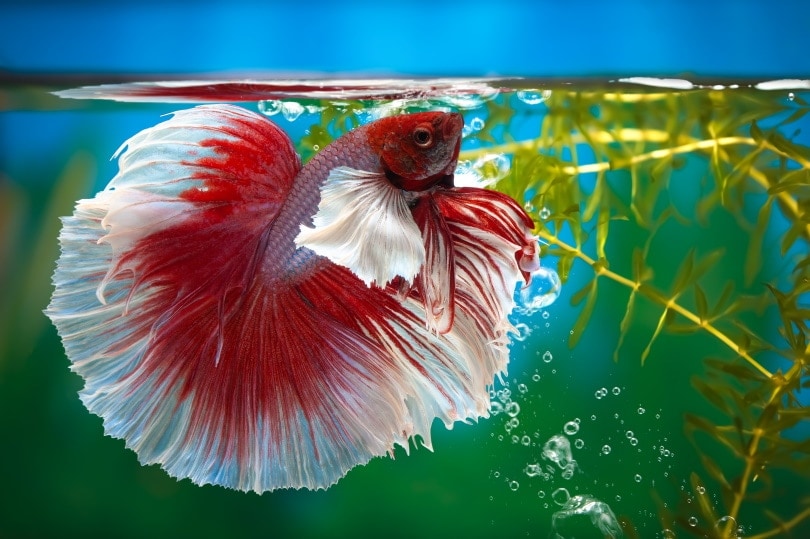
Commonly referred to as the Siamese fighting fish, Bettas are beautiful specimens from the Anabantidae family. Bettas come in a wide variety of attractive colors ranging from red to white, with many different patterns and fin types. They grow to an adult size of 3 to 4 inches, and the fins of the Betta fish can sometimes be double the size of their body.
The Betta can live for 2 to 5 years and are notorious for their territorial and aggressive nature towards their conspecifics. An individual male Betta should have a minimum size tank of 5 gallons, whereas female Bettas should have a minimum of 15-20 gallons. When keeping Bettas with other fish, you want to ensure the tank size is increased according to the number of tank mates you want to add.
The Harlequin Rasbora
This colorful fish is a beloved tropical fish that should be kept in shoals of at least 6 fish. Rasboras are strictly freshwater fish which makes them ideal to be kept with Bettas as both fish have similar water condition requirements. A minimum tank size of 10-15 gallons will suffice for a small shoal of rasboras. They are not aggressive and should not attempt to bother other fish in the same tank. These fish live between 2 to 5 years and grow around 1.5 to 2 inches in size.
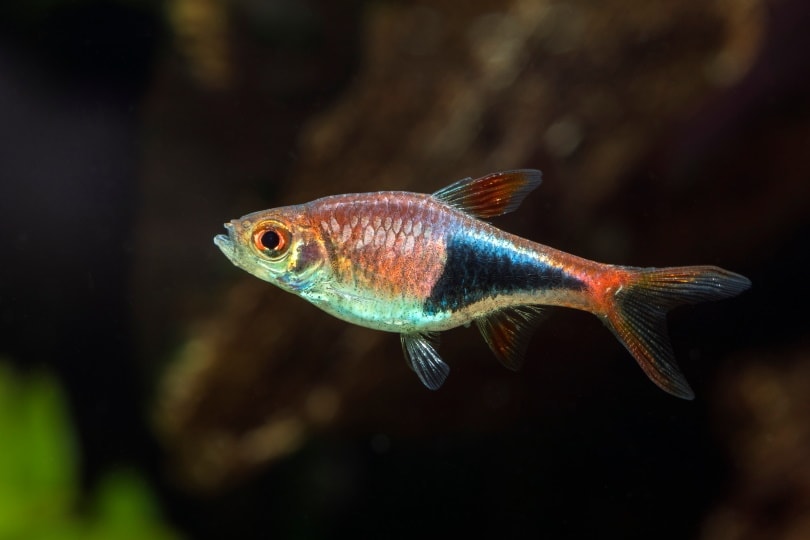
Is It True That Rasboras and Betta Can Be Tank Mates?
Yes! It can be done if you get the process of introducing them right. You want to ensure both species of fish are kept in ideal conditions with adequate space. There is no guarantee there will not be any chasing or aggressive behaviors when they are adjusting to being kept together. However, given how fast Harlequin Rasboras are, they can usually easily give the run around to a curious Betta who may venture too close to them. Being in a school has its benefits, as a curious Betta might not know which single Harlequin to follow when they are grouped up. Because Bettas usually eat insects and invertebrates, they usually don’t view Harlequin Rasboras as a food source.
Bettas who have previously been housed with other fish are more likely to cohabitate well with Harlequin Rasboras. It is also best to add the Betta to the aquarium after the Harlequin Rasboras have already been in there for a few weeks. This way, the Betta might just view them as fish which exist in a new territory rather than newcomers in their existing habitat.
Upon introduction, you will need to closely watch them to ensure that your Betta is not bullying your Harlequins. It is also important to check that the Rasboras are not nipping at your Betta’s long fins (though this is extremely rare). Only one male Betta should be kept with a school of rasboras, but females can be kept in sororities with the addition of Harlequin rasboras (provided your tank is large enough).
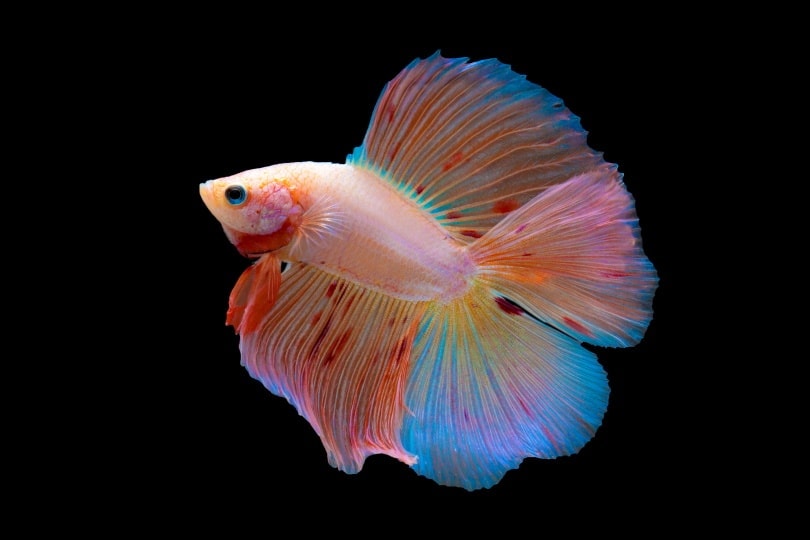
In extremely rare cases, Bettas may attack and kill very young Harlequins (usually because they mistake them for food). They may also attack sick or lethargic Harlequins (often out of curiosity). If you notice this, you should separate your Betta from your Harlequins, as your Betta might inaccurately begin to associate them as food.
Aggression in Bettas might be inherited to some degree, and some individuals may exhibit more aggressive tendencies than others. Such Bettas are best housed alone (they also shouldn’t be bred). Harlequins, while peaceful, should always be in a school. In the absence of a school, they may start exhibiting erratic behavior out of stress, including nipping at your Betta’s fins.
Providing the Right Conditions
The tank size should be altered according to the number of Rasboras you want to keep with a Betta.
- 1 male Betta with 6 Harlequin rasboras can be kept in a minimum of 10 gallons (15 gallons is recommended).
- A sorority of female Bettas and a shoal of 6 Harlequin rasboras should be in a minimum tank size of 20 gallons.
- If you plan to add more fish, the size should be increased by 5 gallons. This also helps to limit aggression since small tanks cause stress and the feeling of being cramped which can cause the fish to turn on each other.
Filter: A gentle sponge filter is ideal for both species. Remember Bettas in particular do not like strong currents.
The tank should be fully cycled before you place the fish inside. Make sure that the tank is heated around 77°F to 83°F (25 – 28.3 °C) since they are tropical fish. A temperature between 81-83°F is ideal, as Bettas prefer temperatures on the slightly higher end (Harlequins are adaptable to this temperature).

Tips to Successfully Keep Bettas with Harlequin Rasboras
- Keep the tank heavily planted with different live plants. Not only does this create a natural environment that both fish are used to in the wild, but it also helps aid in good water quality.
- Plants are appreciated by both Rasboras and Bettas. You may even notice your Betta lays on flat leaves near the surface. Both species can hide away amongst the plants if they feel threatened by one another.
- Ensure each fish is fed a species-appropriate diet. Bettas may try to eat the rasboras food which can lead to digestion issues. You can combat this issue by feeding the fish on different sides of the tank so that their diets do not interfere.
- If you notice any aggressive behaviors like constant chasing or fin-nipping, the fish should be separated immediately.
- Keep the Harlequin rasboras in a decent-sized shoal to prevent them from feeling aggressive and potentially attacking the Betta.
- Ensure the tank has a lid to prevent your fish from jumping out (and from preventing unwanted hazards from entering the water).
- Tanks should be placed on a sturdy, balanced surface and should be in an area where many power sockets are easily accessible. They shouldn’t be kept in drafts or in direct sunlight.
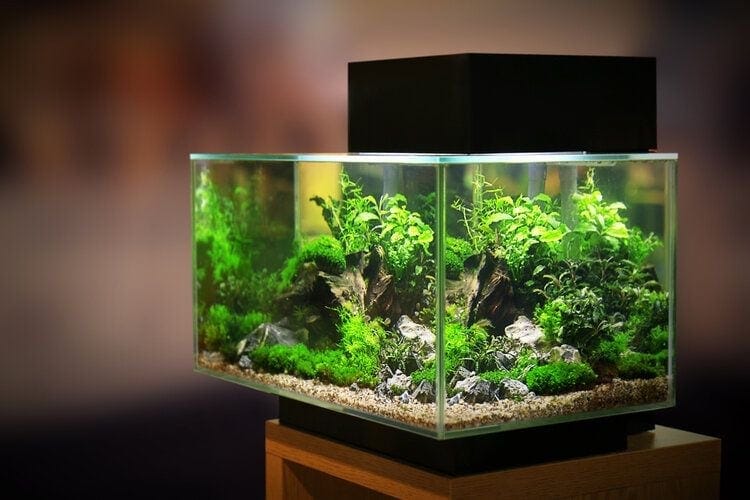
Final Thoughts
Bettas and Harlequin rasboras can make great tank mates. They are compatible and can get along well together. Anecdotally, there is a higher success rate of Bettas living with other fish from a young age than when they have been living alone most of their adult life.
We hope this article has helped inform you on how you can successfully house your Betta and Harlequin rasbora together.
Featured Image Credit: Arunee Rodloy, Shutterstock

